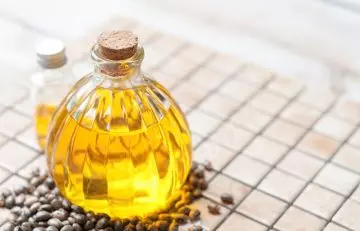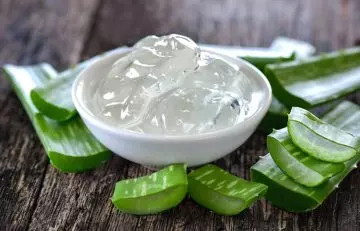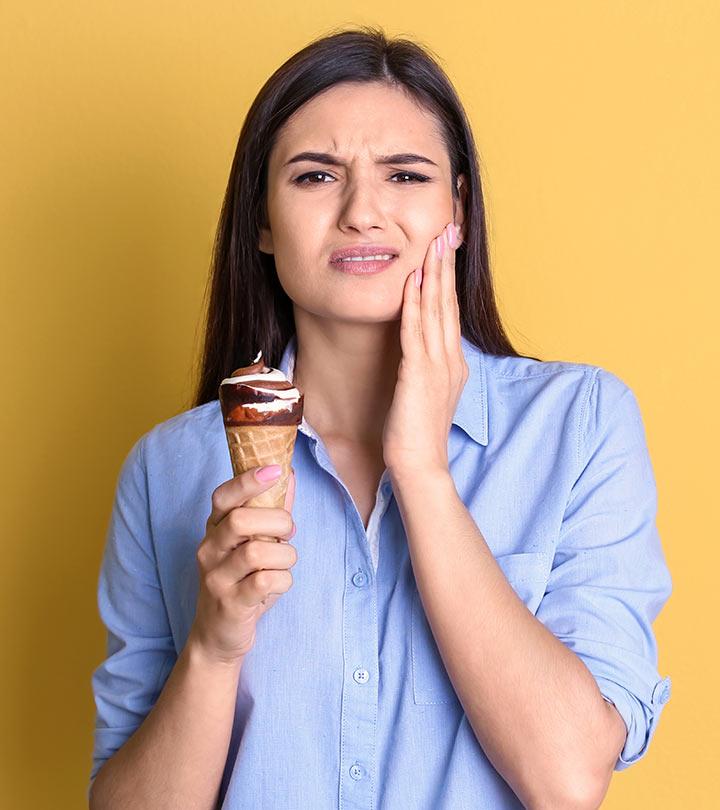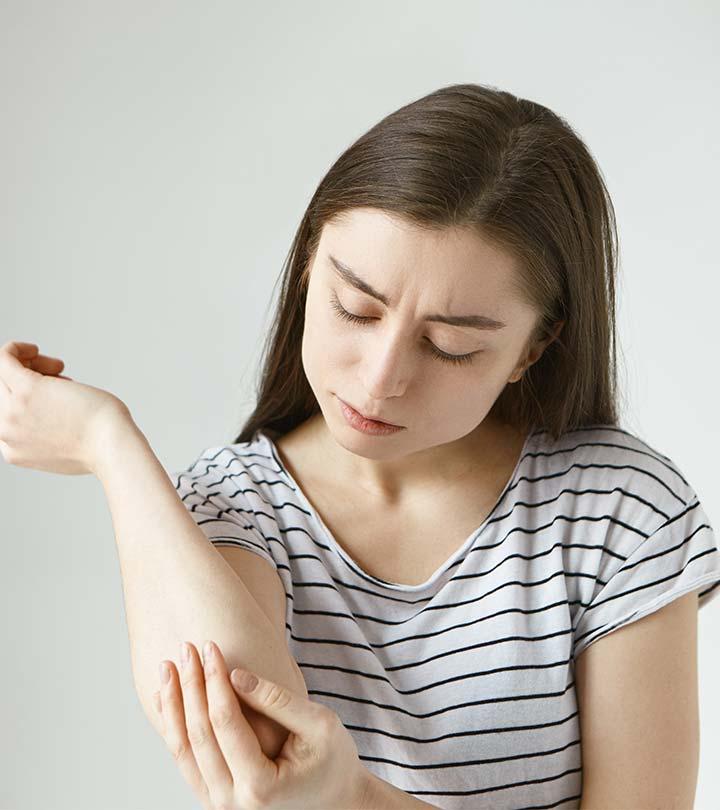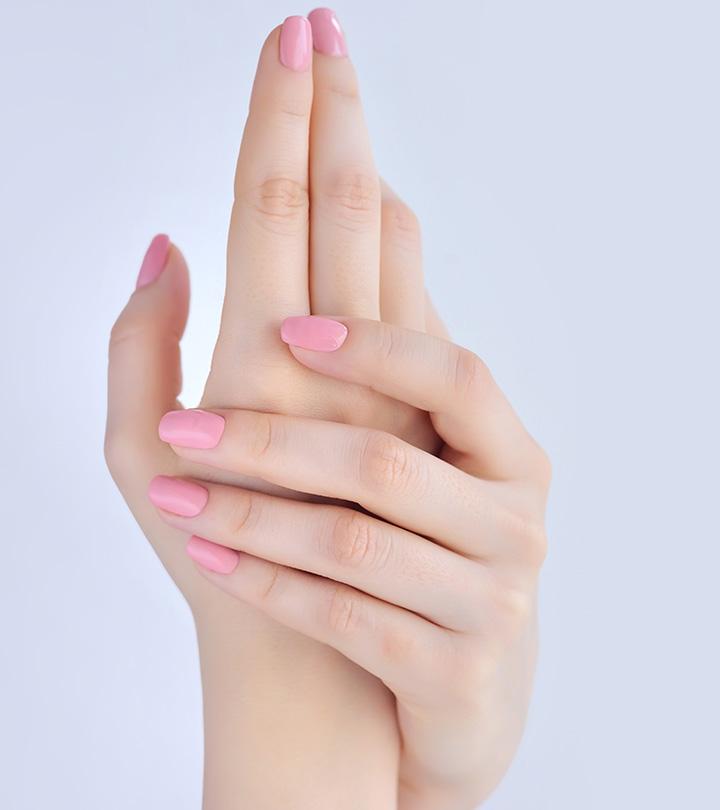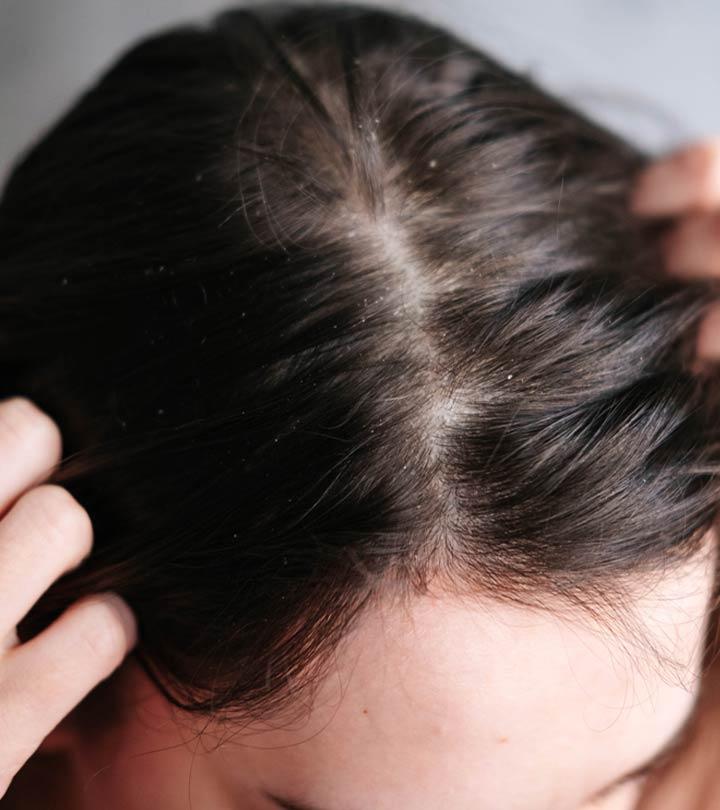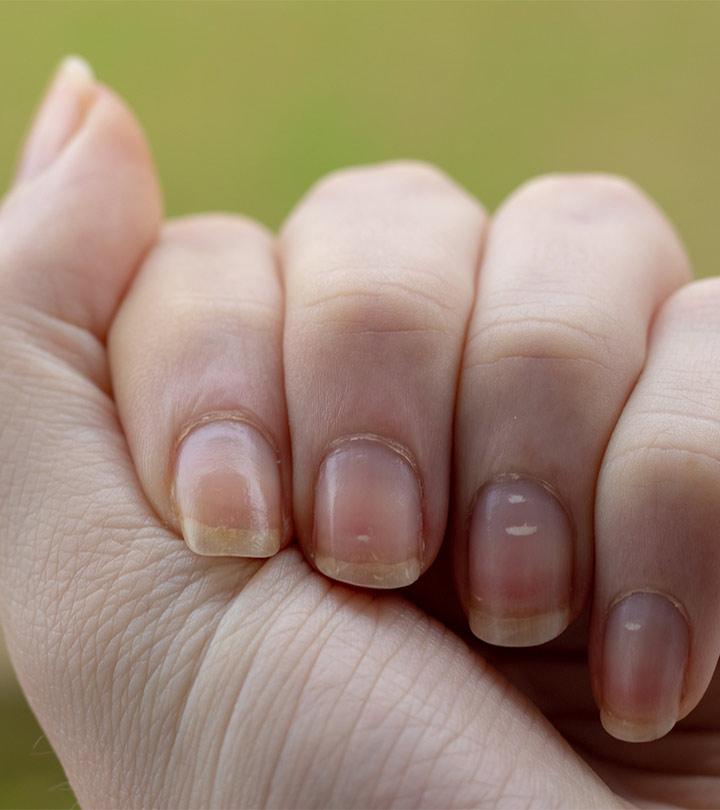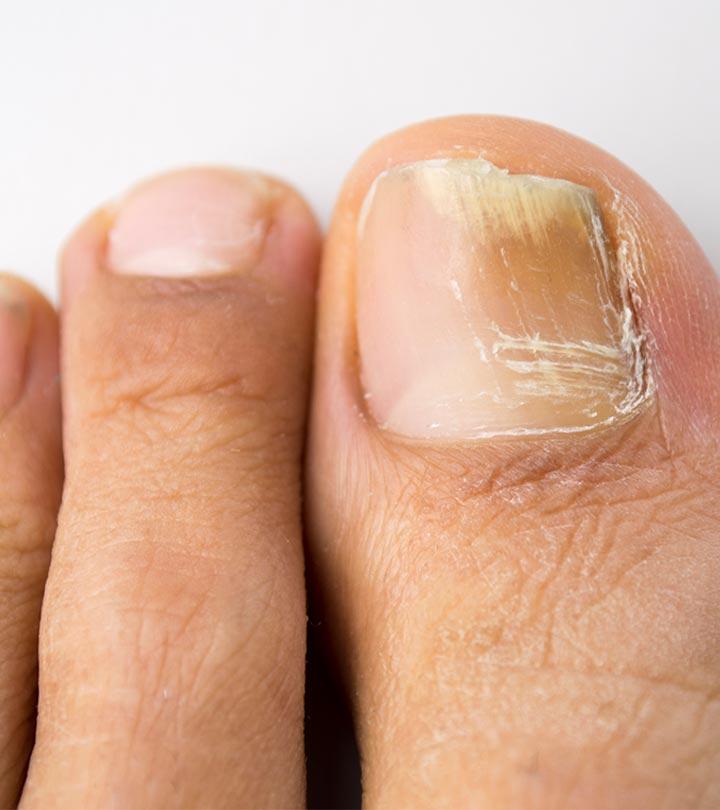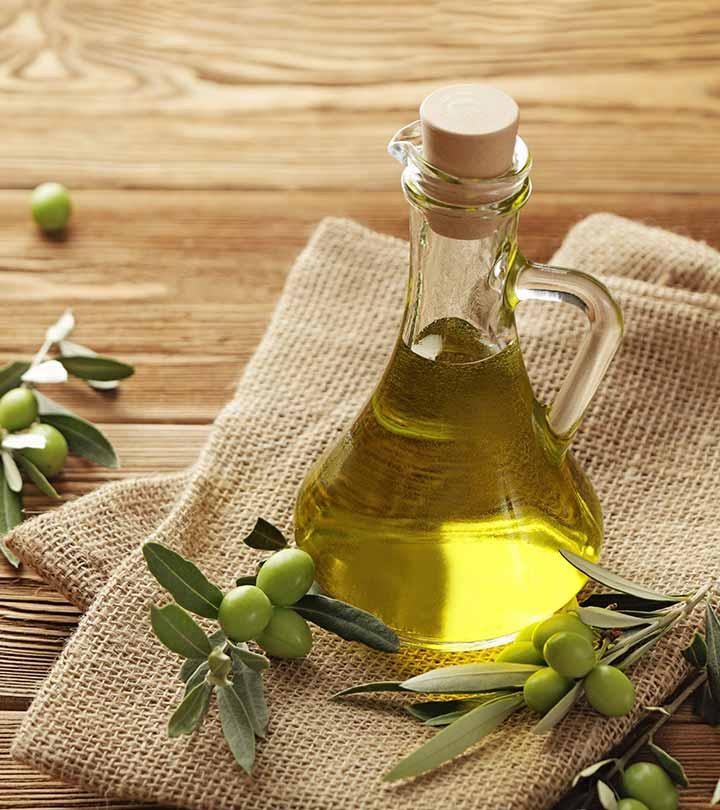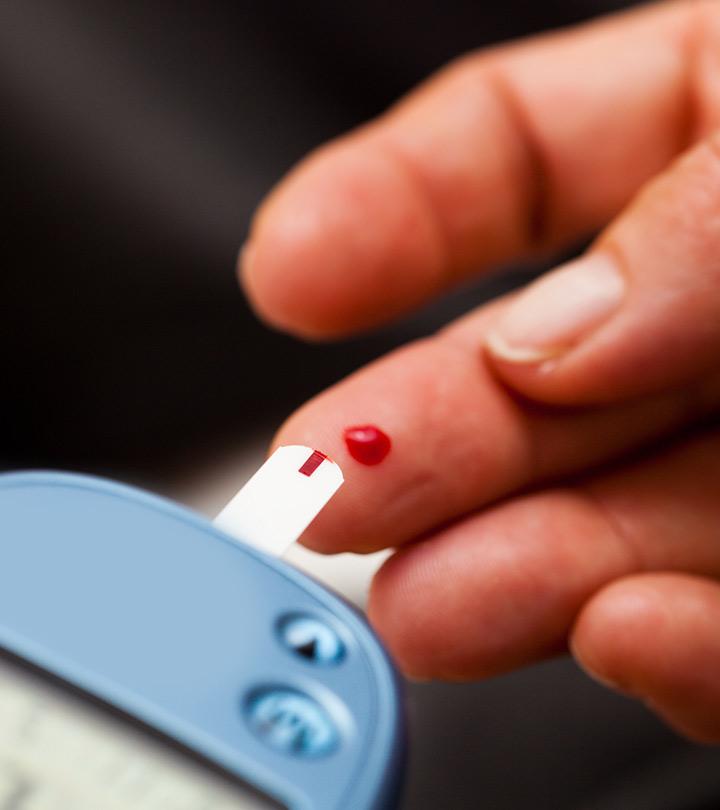16 Home Remedies For Cataracts | Types, Causes, & Prevention
Minimize the risks of cataracts with a mix of natural ingredients from your pantry.

Image: Shutterstock
A cataract is defined as a thick and cloudy area in the lens of your eyes. This happens due to the breakdown of the protein in your eyes which makes your vision blurry or hazy. While cataracts develop slowly over time, they can interfere with your vision and daily activities. Although cataract surgeries are the best way to treat them, a few home remedies can reduce the risk of cataracts over time.
According to the Centers for Disease Control, cataract is the leading cause of blindness in the US, with 20 million Americans over 40 years of age having cataract in one or both eyes (1). If left untreated, it may eventually lead to blindness. This article looks at the causes, symptoms, home remedies, and foods you can try to slow down the risk of developing cataracts. Scroll down to read more.
 Did You Know?
Did You Know?According to a report published in The Lancet Global Health on the causes of blindness and vision impairment in 2020, cataract was the principal cause of global blindness in all 10-year age groups for ages 50 years and older. Though other causes, such as glaucoma and diabetic retinopathy were noted, the percentage of cataract cases is significantly higher across all age groups.
Cataract: Principle Cause Of Global Blindness
Source: Causes of blindness and vision impairment in 2020 and trends over 30 years, and prevalence of avoidable blindness in relation to VISION 2020: the Right to Sight: an analysis for the Global Burden of Disease StudyIn This Article
Home Remedies To Reduce The Risk Of Cataracts
A healthy lifestyle and balanced nutrition are key factors in maintaining good eye health. Additionally, alternative or holistic therapies such as acupuncture and natural ingredients may provide some relief from cataract-related symptoms.
1. Castor Oil
Castor oil exhibits powerful antioxidant properties (2). This may help repair the oxidative damage caused to the eyes. However, you need to be careful about selecting high-quality, pure castor oil as impurities in low-grade castor oil may cause eye irritation.
You Will Need
1-2 drops of hexane-freei XNatural castor oil that is free of all harmful and synthetic chemicals, especially hexane (a substance used for oil seed extraction). castor oil
What You Have To Do
- Pour a drop of castor oil in both your eyes before sleeping.
- Leave the oil overnight.
How Often You Should Do This
Do this once a day for 1-6 months.
2. Vitamins
Preliminary studies show that vitamins C and D may help prevent or slow down the progression of cataracts (3), (4). Hence, consume foods rich in these vitamins, like citrus fruits, green leafy vegetables, milk, cheese, eggs, avocados, and almonds.
Note: Consult a doctor before taking additional supplements for these vitamins.
 Quick Tip
Quick Tip3. Apple Cider Vinegar
Rat studies show that apple cider vinegar has antioxidant properties (5). Thus, regular consumption of apple cider vinegar may help prevent vision disorders and damage to the retina.
You Will Need
- 1 tablespoon of apple cider vinegar
- 1 glass of warm water
- 1 tablespoon of honey
What You Have To Do
- Add a tablespoon each of honey and apple cider vinegar to a glass of warm water.
- Mix well and consume this mixture daily.
- You can also use carrot juice instead of water.
How Often You Should Do This
Do this once a day.
4. Essential Oils
Frankincense and lavender essential oils exhibit great antioxidant potential (6), (7). Hence, they may help improve vision by preventing oxidative damage to the eye.
You Will Need
1-2 drops of frankincense or lavender oil
What You Have To Do
- Rub one or two drops of frankincense or lavender oil between your palms.
- Apply it to closed eyes and leave it on for a few minutes.
- Rinse it off with water.
How Often You Should Do This
Do this 1-2 times a day.
5. Aloe Vera
Aloe vera is an anti-inflammatory and a powerful antioxidant (8). This herb may provide nourishment to the eyes and reduce or delay the signs of cataracts and other eye abnormalities.
You Will Need
1 tablespoon of aloe vera gel
What You Have To Do
- Extract a tablespoon of fresh aloe vera gel.
- Refrigerate it and apply it to closed eyes.
- Leave it on for 15 to 20 minutes and rinse it off with water.
- You can also consume a cup of aloe vera juice daily.
How Often You Should Do This
Do this a few times daily.
6. Coconut Water
Coconut water is packed with electrolytesi XElectronically charged minerals found in blood that affect bodily functions, such as maintaining the level of water and pH level of blood. and has antioxidant potential (9). This may help in reducing oxidative damage caused to the eyes.
You Will Need
- A few drops of coconut water
- A clean washcloth
What You Have To Do
- Pour a few drops of chilled coconut water into your eyes and close them.
- Place a warm washcloth over your closed eyes.
- Leave it on for 5 to 10 minutes.
How Often You Should Do This
Do this 2 times a day.
7. Flax seed Oil
Flax seed oil is a rich source of omega-3 fatty acids (10). Omega-3 fatty acids exhibit antioxidant and anti-inflammatory activities (11). This may help reduce the risk of eye disorders, like macular degeneration and cataracts.
You Will Need
½-1 tablespoon of cold-pressed flax seed oil
What You Have To Do
Add half to one tablespoon of flax seed oil to your favorite dish or smoothie.
How Often You Should Do This
Do this daily.
8. Garlic
Garlic contains allicini XAn oily natural liquid found in garlic that is responsible for its distinct odor, color and anti-inflammatory properties. , which is a strong antioxidant (12). This may repair oxidative damage in the eyes.
You Will Need
Peeled garlic cloves
What You Have To Do
- Chew on one or two garlic cloves daily.
- You can also add garlic to your favorite dishes if the flavor is too strong for you.
How Often You Should Do This
Do this 1-2 times a day.
9. Ginger
Ginger exhibits anti-inflammatory and antioxidant effects (13), (14). These properties may help reduce inflammation and repair oxidative damage to the eyes.
You Will Need
- ½ teaspoon of ginger juice
- ½ teaspoon of lemon juice
- 1 teaspoon of water
- Cotton pads
What You Have To Do
- Mix half a teaspoon each of lemon juice and ginger juice.
- Add a teaspoon of water to this mixture.
- Soak two cotton pads in the mixture and place them over closed eyes.
- Leave them on for 15 to 20 minutes and then take them off.
How Often You Should Do This
Do this 1-2 times a day.
10. Ginkgo Biloba
Gingko biloba has strong antioxidant properties (15). This may protect the lens from cataract formation.
You Will Need
40-120 mg of ginkgo biloba supplements
What You Have To Do
Take 40-120 mg of ginkgo biloba supplements after consulting your doctor.
How Often You Should Do This
Do this once a day.
11. Green Tea
Green tea is packed with polyphenolsi XNatural chemical compounds in plants that protect plants from microbe attack and possess antioxidant properties. that are powerful antioxidants (16). These polyphenols may help protect the eye lens from further damage and reverse existing cataracts to a certain extent.
You Will Need
- 1 teaspoon of green tea
- 1 cup of water
What You Have To Do
- Add a teaspoon of green tea to a cup of water and bring it to a boil.
- Simmer and strain.
- Allow the tea to cool a little before drinking it.
How Often You Should Do This
Drink this 2 times a day.
12. Honey
Honey is a powerful antioxidant and anti-inflammatory compound (17). It may help treat existing damage to the eye lens and may also prevent future issues.
You Will Need
- 1 teaspoon of honey
- 1-1 ½ teaspoons of water
What You Have To Do
- Mix the honey with water.
- Pour this solution into your eyes and blink away the excess water.
- You can also consume a teaspoon of honey regularly.
How Often You Should Do This
Do this 1-2 times a day.
13. Lemon Juice
The citric acid present in lemon juice has antioxidant properties (18). Rat studies showed that it might help reduce the risk of cataracts (18).
You Will Need
- ½ teaspoon of lemon juice
- 1 teaspoon of water
- Cotton pads
What You Have To Do
- Dilute half a teaspoon of lemon juice with a teaspoon of water.
- Mix well and soak a cotton pad in it.
- Place the cotton pads over closed eyelids and leave them on for about 20 minutes.
- Remove the cotton pads and rinse your eyes with plain water.
How Often You Should Do This
Do this at least once a day.
14. Onion Juice
Onion is a rich source of flavonoidsi XA group of plant nutrients in fruits and vegetables that possess antioxidant and anti-inflammatory properties. and was found to prevent cataract formation in rat studies (19).
You Will Need
- 1 teaspoon of fresh onion juice
- 2 teaspoons of water
What You Have To Do
- Add two teaspoons of water to a teaspoon of fresh lemon extract.
- Mix well and pour a drop of this solution into both the eyes.
- Blink away the excess mixture.
How Often You Should Do This
Do this 1-2 times a day.
15. Wheatgrass Juice
Wheat grass is rich in beta-carotene and also exhibits antioxidant properties (20). This may make wheatgrass an excellent home remedy for reducing the risk of cataracts.
You Will Need
1-2 ounces of fresh wheatgrass juice
What You Have To Do
Consume 1 to 2 ounces of wheatgrass juice daily.
How Often You Should Do This
Do this for a few weeks.
16. Olive Oil
Olive oil is packed with antioxidants (21). This may help repair damaged lenses and keep the eyes nourished and moisturized (22).
You Will Need
Olive oil (as required)
What You Have To Do
- Add olive oil to your favorite dishes and salads.
- You can also pour a drop of olive oil into your eyes.
How Often You Should Do This
Do this on a regular basis.
Anecdotal evidence suggests that using turmeric, bilberry, milk thistle, chamomile, marigold, and saffron may help reduce the risk of cataracts. Additionally, you may engage in meditation, yoga, acupuncture, and massage to help you manage your cataracts. However, limited data is available to prove these claims.
It is important to remember that these home remedies are not verified and may not work for everyone.
Anoop, a blogger on a quest to address cataracts naturally, experimented with various remedies. He writes, “I tried several things in the eyes, all separately at different times, not together…Overall, I was quite disappointed that I wasn’t able to reverse the cataracts holistically (i).” In his experience, castor oil, Itone eye drops, and Cineraria maritima offered no relief. Triphala tea eyewash showed promise in slowing progression, and Khakhra Mul Ark/Dhak Ki Jadka eye drops arrested the condition but fell short of reversing it. Despite efforts, he found limited success in halting progression but could not reverse the condition.
Faster diagnosis of cataracts may assure faster treatment and can prevent further complications in the eyes.
Diagnosis
Doctors may run the following tests to look for a developing cataract:
- A comprehensive eye test that includes an eye chart test to check the distant vision and a tonometry test to measure your eye pressure.
- Testing the eye’s sensitivity to glare.
- Testing how you perceive colors.
In addition to the remedies, one must also eat right. Given below are some foods that may help delay the development of cataracts.
Best Foods For Cataracts
Since excess oxidative stress is believed to be one of the main causes of cataracts, foods rich in antioxidants may help. Consume foods like:
- Citrus fruits
- Green leafy vegetables
- Guavas
- Bell peppers
- Papaya
- Broccoli
Beta-carotenei XA pigment in plants responsible for the yellow and orange color in vegetables and fruits that constitute an important source of vitamin A. rich foods may also help delay or prevent cataract formation. A few of them include:
- Carrots
- Sweet potato
- Kale
- Spinach
- Turnip
You may also follow these prevention tips to prevent the formation of cataracts.
Prevention Tips
- Quit smoking.
- Wear shades while out in the sun.
- Limit your alcohol intake.
- Keep a check on the blood sugar levels.
- Get your eyes tested regularly.
- Do not strain your eyes for long periods.
Additionally, eating a diet rich in minerals and incorporating exercises in your routine may help reduce the risk of cataracts (23).
Cataracts may be classified into different types based on their cause and where they develop.
Types Of Cataracts
The different types of cataracts include:
- Nuclear Cataracts: These are formed in the center of the lens and may cause the nucleus of the lens to turn brownish or yellowish.
- Cortical Cataracts: These are wedge-shaped and are formed around the nucleus (center) of the lens.
- Posterior Cataracts: These affect the back of the lens and are formed faster than the former types.
- Congenital Cataracts: These cataracts are present at birth or may surface during the child’s first year.
- Secondary Cataracts: Secondary cataracts are often a result of health conditions like diabetes and glaucoma or medications like steroids.
- Traumatic Cataracts: Cataracts that are a result of trauma to the eyes over the years are called traumatic cataracts.
- Radiation Cataracts: As the name suggests, this type of cataract occurs after an individual undergoes radiation for cancer.
Let’s look at the various causes of cataracts and risk factors of the condition.
Causes Of And Risk Factors For Cataracts
Cataracts may occur due to:
- Overproduced oxidants
- Trauma or injury
- Radiation
- Medications like steroids
- Smoking
- Exposure to ultraviolet radiation
- Medical issues like diabetes and glaucoma
- Smoking
Factors that may put a person at a higher risk of developing cataracts include:
- Advancing age
- Alcohol abuse
- Obesity
- High blood pressure
- Past injuries to your eye
- A history of cataracts in your family
The following are some of the most common signs that surface with the development of cataracts.
Signs And Symptoms Of Cataracts
- Blurry vision
- Reduced vision at night.
- Colors look faded.
- Your sensitivity to glare increases.
- Visibility of halos while looking directly at the light.
- Double vision
- The power of your prescription glasses keeps changing.
Surgery is usually recommended to get rid of cataracts permanently. The different types of cataract treatment options you can opt for are mentioned in the next section.
Surgical Treatment Options For Cataracts
Surgery is one of the most effective treatments for cataracts. Salam Khan, a blogger, learned of his cataract condition in his late twenties. Despite initial reluctance, financial concerns, and the daunting prospect of surgery, he eventually decided to undergo the procedure. Post-surgery, the transformation was vivid, he writes, “I COULD FINALLY SEE CLEARLY WITH MY BOTH EYES. IT FELT LIKE I WAS VIEWING THINGS IN 3D (ii).” The experience marked a profound shift from a lifetime of blurred vision.
- Phacoemulsification: This is a small-incision surgery that involves making a tiny cut on the cornea (24). Through this cut a small device sends ultrasound waves to break and clear up the cloudy lens. The surgeon may then replace the lens and clean out the debris.
- Extracapsular Cataract Extraction:It is a large-incision surgery that involves the extraction of the lens without breaking it and replacing it with an artificial one (25).
- Femtosecond Laser Surgery: It involves breaking up the lens and then putting in a new lens. In this surgery, the surgeon can reshape the cornea to treat blurry vision as well (26).
Post-surgery there are several steps to be followed as well to ensure your eyes heal effectively. A blogger, post-cataract surgery, followed a meticulous eye care routine, applying antibiotic and anti-irritation drops every six hours. He notes, “The first will be used for a month, the second for a week (iii).” Despite the absence of pain, he acknowledged a sensation akin to a sleepless night. His overall experience reflects a routine, careful approach to recovery.
Infographic: Types Of Cataract Surgery
While not all cases of cataract require immediate surgery, the condition generally deteriorates over time and necessitates the removal of the lens to improve vision. Check out the infographic below to know more about the different procedures available, what to expect after the surgery, and how to take care of your eyes in the recovery period. Illustration: StyleCraze Design Team
A cataract in the eye results from the breakdown of certain eye proteins and leads to blurry or cloudy vision. Being a progressive vision disorder, this condition requires prompt remedial measures to prevent worsening vision or in some cases, vision loss. The home remedies for cataracts discussed in this article are primarily for delaying the risk and progression of the condition and cannot cure it. In addition to the herbal remedies, a diet rich in antioxidants can help slow down cataract formation. However, for treatment options, you need to seek medical guidance.
Frequently Asked Questions
What is the average age for cataracts?
Individuals aged between 41-60 years and above are commonly affected by cataracts. This clearly shows that advancing age is one of the leading risk factors for this condition.
What will happen if a cataract is left untreated?
Cataracts may cause legal blindness if left untreated. When not treated for longer periods, they may cause total blindness.
Can you remove a cataract without surgery?
Currently, some eye drops are being tested for dissolving cataracts without the need for surgery. Also, the natural remedies mentioned above may help in reducing the risk of cataracts.
How long does it take to get a cataract removed?
Surgery for cataracts hardly takes 10 minutes. However, the blurriness after surgery may take anywhere between 24 hours to even two weeks (in rare cases) to clear.
How long can you have a cataract before you go blind?
There is no clear way to determine this. The way cataracts form depends on the patient’s health and whether the cataracts were due to an injury or an age-related disorder. The majority of cataracts develop gradually, so it is crucial to schedule routine eye checkups with your ophthalmologist.
Key Takeaways
- Smoking and alcohol consumption can increase the risk of cataracts
- Cataracts cause blurry or double vision.
- Castor oil and apple cider vinegar may help prevent eye degeneration.
- Eat antioxidant-rich foods like citrus fruits and guavas to help delay cataract formation.
- Wear sunglasses whenever you are exposed to sunlight to help prevent cataract.

Image: Stable Diffusion/StyleCraze Design Team
References
Articles on StyleCraze are backed by verified information from peer-reviewed and academic research papers, reputed organizations, research institutions, and medical associations to ensure accuracy and relevance. Read our editorial policy to learn more.
- “Common eye disorders” Centers for Disease Control.
https://www.cdc.gov/visionhealth/basics/ced/index.html - Patel, Vinay R., et al. “Castor oil: properties, uses, and optimization of processing parameters in commercial production.”Lipid insights 9 (2016): LPI-S40233.
https://www.ncbi.nlm.nih.gov/pmc/articles/PMC5015816/ - van der Pols, Jolieke C. “A possible role for vitamin C in age-related cataract.”Proceedings of the Nutrition Society 58.2 (1999): 295-301.
https://pubmed.ncbi.nlm.nih.gov/10466170/ - Brown, Craig J., and Faical Akaichi. “Vitamin D deficiency and posterior subcapsular cataract.”Clinical ophthalmology (Auckland, NZ) 9 (2015): 1093.
https://pubmed.ncbi.nlm.nih.gov/26124632/ - Halima, Ben Hmad, et al. “Antidiabetic and antioxidant effects of apple cider vinegar on normal and streptozotocin-induced diabetic rats.” International Journal for Vitamin and Nutrition Research (2019).
https://pubmed.ncbi.nlm.nih.gov/31140380/ - Al-Harrasi, Ahmed, et al. “Antiglycation and antioxidant activities and HPTLC analysis of Boswellia sacra Oleogum resin: the sacred frankincense.”Tropical Journal of Pharmaceutical Research 12.4 (2013): 597-602.
https://www.ajol.info/index.php/tjpr/article/view/93284 - Danh, Luu Thai, et al. “Comparison of chemical composition, antioxidant and antimicrobial activity of lavender (Lavandula angustifolia L.) essential oils extracted by supercritical CO 2, hexane and hydrodistillation.”Food and bioprocess technology 6.12 (2013): 3481-3489.
https://link.springer.com/article/10.1007/s11947-012-1026-z - Woźniak, Anna, and Roman Paduch. “Aloe vera extract activity on human corneal cells.”Pharmaceutical biology 50.2 (2012): 147-154.
https://pubmed.ncbi.nlm.nih.gov/22338121/ - Prathapan, A., and T. Rajamohan. “Antioxidant and antithrombotic activity of tender coconut water in experimental myocardial infarction.”Journal of Food Biochemistry 35.5 (2011): 1501-1507.
https://onlinelibrary.wiley.com/doi/abs/10.1111/j.1745-4514.2010.00471.x - Rodriguez-Leyva, Delfin, et al. “The cardiovascular effects of flaxseed and its omega-3 fatty acid, alpha-linolenic acid.”Canadian Journal of Cardiology 26.9 (2010): 489-496.
https://www.sciencedirect.com/science/article/abs/pii/S0828282X10704554 - Hobbs, Ronald P., and Paul S. Bernstein. “Nutrient supplementation for age-related macular degeneration, cataract, and dry eye.”Journal of ophthalmic & vision research 9.4 (2014): 487.
https://www.ncbi.nlm.nih.gov/pmc/articles/PMC4329711/ - Chung, Lip Yong. “The antioxidant properties of garlic compounds: allyl cysteine, alliin, allicin, and allyl disulfide.”Journal of medicinal food 9.2 (2006): 205-213.
https://pubmed.ncbi.nlm.nih.gov/16822206/ - Grzanna, Reinhard, Lars Lindmark, and Carmelita G. Frondoza. “Ginger—an herbal medicinal product with broad anti-inflammatory actions.”Journal of medicinal food 8.2 (2005): 125-132.
https://pubmed.ncbi.nlm.nih.gov/16117603/ - Masuda, Yuki, et al. “Antioxidant properties of gingerol related compounds from ginger.”Biofactors 21.1‐4 (2004): 293-296.
https://pubmed.ncbi.nlm.nih.gov/15630214/ - Ertekin, Mustafa Vecdi, et al. “Effects of oral Ginkgo biloba supplementation on cataract formation and oxidative stress occurring in lenses of rats exposed to total cranium radiotherapy.”Japanese journal of ophthalmology 48.5 (2004): 499-502.
https://pubmed.ncbi.nlm.nih.gov/15486777/ - Kumar, Vijay, et al. “Effect of Green Tea Polyphenol Epigallocatechin-3-gallate on the Aggregation of αA (66-80) Peptide, a Major Fragment of αA-crystallin Involved in Cataract Development.”Current eye research 42.10 (2017): 1368-1377.
https://pubmed.ncbi.nlm.nih.gov/28628342/ - Golychev, V. N. “Use of honey in conservative treatment of senile cataracts.”Vestnik oftalmologii 106.6 (1990): 59-62.
https://pubmed.ncbi.nlm.nih.gov/2075663/ - Nagai, Ryoji, et al. “Citric acid inhibits development of cataracts, proteinuria and ketosis in streptozotocin (type 1) diabetic rats.”Biochemical and biophysical research communications 393.1 (2010): 118-122.
https://www.ncbi.nlm.nih.gov/pmc/articles/PMC2917331/ - Javadzadeh, Alireza, et al. “Preventive effect of onion juice on selenite-induced experimental cataract.”Indian journal of ophthalmology 57.3 (2009): 185.
https://www.ncbi.nlm.nih.gov/pmc/articles/PMC2683439/ - Chauhan, M. “A pilot study on wheat grass juice for its phytochemical, nutritional and therapeutic potential on chronic diseases.” International journal of chemical studies 2.4 (2014): 27-34.
https://acsess.onlinelibrary.wiley.com/doi/abs/10.2134/agronj1940.00021962003200040008xhttps://www.researchgate.net/publication/332810463_A_pilot_study_on_wheat_grass_juice_for_its_phytochemical_nutritional_and_therapeutic_potential_on_chronic_diseases - Raederstorff, Daniel. “Antioxidant activity of olive polyphenols in humans: a review.”International Journal for Vitamin and Nutrition Research 79.3 (2009): 152-165.
https://pubmed.ncbi.nlm.nih.gov/20209466/ - Cougnard-Gregoire, Audrey, et al. “Olive oil consumption and age-related macular degeneration: the ALIENOR Study.”PloS one 11.7 (2016).
https://www.ncbi.nlm.nih.gov/pmc/articles/PMC4965131/ - Williams. T Paul, “Walking and running are associated with similar reductions in cataract risk” US National Library of Medicine, 2014 Jun 1.
https://www.ncbi.nlm.nih.gov/pmc/articles/PMC3757559/ - Phacoemulsification
https://www.ncbi.nlm.nih.gov/books/NBK576419/ - Cataract Surgery
https://www.ncbi.nlm.nih.gov/books/NBK559253/ - Femtosecond-laser assisted surgery of the eye: overview and impact of the low-energy concept
https://www.ncbi.nlm.nih.gov/pmc/articles/PMC7912418/





